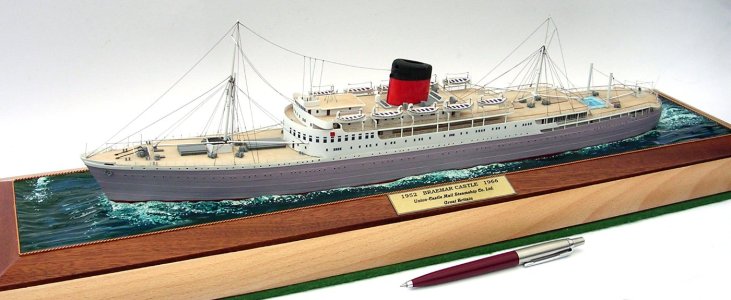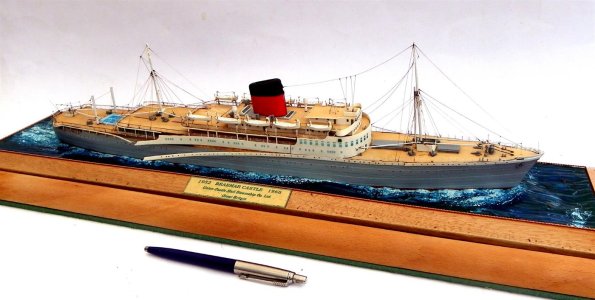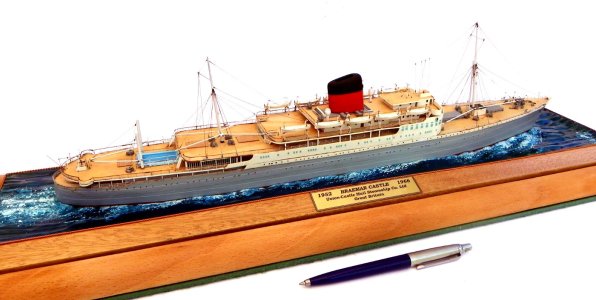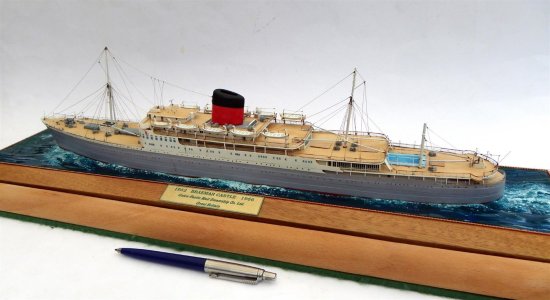I'm sorry, it was a joke of sorts. When I was in school in the 70s we had to learn about Peak, Peak to Peak, RMS and DC equivalent power. I kept at it long enough to get my bachelors of science in electrical engineering. I retired from the engineering field 15 years ago.Afraid that means nothing to me!
-

Win a Free Custom Engraved Brass Coin!!!
As a way to introduce our brass coins to the community, we will raffle off a free coin during the month of August. Follow link ABOVE for instructions for entering.
You are using an out of date browser. It may not display this or other websites correctly.
You should upgrade or use an alternative browser.
You should upgrade or use an alternative browser.
Plan drawing
- Thread starter shipbuilder
- Start date
- Watchers 12
- Joined
- Jun 30, 2012
- Messages
- 1,418
- Points
- 433

BSEE 1973 still doesn't mean anything to me!. I quit the "rat race" in late 1992, as I didn't like the advances that modern electronics were making. I had no axe to grind really, as I was communications officer on a brand new passenger liner for my last two years at sea. Only worked 6 months a year - voyage on - voyage off, full pay all the time and wife could travel with me free. I became a full-time model shipbuilder and maritime historian (merchant navy) - self employed and earning a fraction of what I had at sea. But leaving the rat race was something that I never regretted.
Not really important anymore but it means Bachelor of Science Electrical Engineering granted in 1973
BTW, thats quite an animation.
BTW, thats quite an animation.
- Joined
- Sep 8, 2024
- Messages
- 179
- Points
- 78

So true,So far, nobody's come up with anything that matches the "snap" of a knife-edged pen and the shellac base of India ink on a white background.
No one seems to have mentioned what I see as the main issue with modern technical pens, in that the dyes/inks they use are not permanent.
I have tried various makes, but because of the way the fluid has to be dispensed it is not permanent when it lives in weather and sunlight.
When you use steel pens, you can apply real paint, or pigment laden inks in waterproof media. Whilst shellac is not waterproof, I’d bet a shellac based pigmented medium over anything a modern pen gives out when left in a sunny window for, say, 3 years.
Yes, takes some skill to use, but surely the acquisition of arcane skill and knowledge is what this entire corner of Sir TimBL’s internet is all about.
Jim
- Joined
- Jun 30, 2012
- Messages
- 1,418
- Points
- 433

I did know about that, but it doesn't bother me very much. I keep the completed drawings in a wooden portfolio that keeps them in the dark. I always photograph them as jpegs and keep them on more than one external hard drive. Any framed images that I have on display can easily be replaced if they fade. As my drawings are all of merchant ships, I know for a fact that very few people have much interest in them, so really, they are mainly for my own pleasure and amusement.
I do not follow any conventional rules and some of my methods may be regarded as "cheating," but I have never claimed to be an expert in anything. This one, for instance, has a photograph of the real sea added by me via Photoshop. Pretty basic, but accurate as far as the ship is concerned, and I like the result.

I do not follow any conventional rules and some of my methods may be regarded as "cheating," but I have never claimed to be an expert in anything. This one, for instance, has a photograph of the real sea added by me via Photoshop. Pretty basic, but accurate as far as the ship is concerned, and I like the result.

Last edited:
Oh, I'm sure a permanent India ink drawing will last a lot longer than three years in the sun with no ill effects. India ink pigment does not fade. When dried, India ink's lamp black pigment is waterproof.Whilst shellac is not waterproof, I’d bet a shellac based pigmented medium over anything a modern pen gives out when left in a sunny window for, say, 3 years.
Shellac, which is used as the binding agent in most India ink, is not waterproof; it’s water-resistant. This means it can withstand some moisture but will not hold up against prolonged exposure to water. When exposed to water, shellac can last several hours before damage occurs. However, prolonged exposure can lead to peeling or discoloration. Given the waterproof quality of India ink's lamp black pigment, the minimal amount of shellac in it is irrelevant to the analysis.
- Joined
- Sep 8, 2024
- Messages
- 179
- Points
- 78

Oh, I'm sure a permanent India ink drawing will last a lot longer than three years in the sun with no ill effects. India ink pigment does not fade. When dried, India ink's lamp black pigment is waterproof.
Shellac, which is used as the binding agent in most India ink, is not waterproof; it’s water-resistant. This means it can withstand some moisture but will not hold up against prolonged exposure to water. When exposed to water, shellac can last several hours before damage occurs. However, prolonged exposure can lead to peeling or discoloration. Given the waterproof quality of India ink's lamp black pigment, the minimal amount of shellac in it is irrelevant to the analysis.
Aye!
So if it is shellac as the binder in Indian ink, when it degrades in water, what keeps the pigment in place on the paper?
Some form of polymerising component such as linseed oil would do the job?
Does anyone know?
J
Aye!
So if it is shellac as the binder in Indian ink, when it degrades in water, what keeps the pigment in place on the paper?
Some form of polymerising component such as linseed oil would do the job?
Does anyone know?
J
Shellac is water resistant, but not waterproof. It doesn't "degrade in water," liquify, or smear. Shellac will "cloud" upon prolonged (several hours) contact with water. That clouding will usually disappear when the shellac dries. The primary concern with shellacked furniture finishes is spilled alcoholic beverages. The alcohol in the drink will tend to dissolve the shellac. It's definitely not alcohol resistant, but it certainly is water resistant.
The pigment remains in place even when wet because:
"Basic India ink is composed of a variety of fine soot, known as lampblack, combined with water to form a liquid. No binder material is necessary: the carbon molecules are in colloidal suspension and form a waterproof layer after drying. A binding agent such as gelatin or, more commonly, shellac may be added to make the ink more durable once dried. India ink is commonly sold in bottled form, as well as a solid form as an inkstick (most commonly, a stick), which must be ground and mixed with water before use. If a binder is used, India ink may be waterproof or non-waterproof." https://en.wikipedia.org/wiki/India_ink
- Joined
- Sep 10, 2024
- Messages
- 925
- Points
- 353

So is it just me, or is anyone else thinking that this whole idea of whether or not your ink binder will stand up to prolonged exposure to water ... is moot? If you have a drawing that is exposed to that kind of moisture, you'll have bigger problems than the ink binder dissolving.
Just sayin'.
Just sayin'.
That'd be a "yes," Russ.So is it just me, or is anyone else thinking that this whole idea of whether or not your ink binder will stand up to prolonged exposure to water ... is moot? If you have a drawing that is exposed to that kind of moisture, you'll have bigger problems than the ink binder dissolving.
Just sayin'.
- Joined
- Jun 30, 2012
- Messages
- 1,418
- Points
- 433

Really, it is just a matter of common sense. Lots of museums and picture galleries displaying very old miniature paintings, display them in dimmed light, to prevent fading. Sometimes, a button is provided to illuminate them briefly for closer inspection. Lots of things suffer from sunlight. This is a model I built some time ago, and I always told my clients not to put them on window ledges where they could get direct sunlight, but there were always some who ignored this advice. This is the result of several years on a window ledge. In addition to the obvious decay, all the windows and portholes have faded badly, and the hull painting in general has faded. Even the display case woodwork had deteriorated.
If you don't look after your drawings, they will most likely fade in time. Nothing lives for ever! The first image shows the model on completion!


If you don't look after your drawings, they will most likely fade in time. Nothing lives for ever! The first image shows the model on completion!


- Joined
- Sep 10, 2024
- Messages
- 925
- Points
- 353

Really, it is just a matter of common sense. Lots of museums and picture galleries displaying very old miniature paintings, display them in dimmed light, to prevent fading. Sometimes, a button is provided to illuminate them briefly for closer inspection. Lots of things suffer from sunlight. This is a model I built some time ago, and I always told my clients not to put them on window ledges where they could get direct sunlight, but there were always some who ignored this advice. This is the result of several years on a window ledge. In addition to the obvious decay, all the windows and portholes have faded badly, and the hull painting in general has faded. Even the display case woodwork had deteriorated.
If you don't look after your drawings, they will most likely fade in time. Nothing lives for ever! The first image shows the model on completion!
View attachment 534548
View attachment 534547
That must have been so discouraging. Can I assume you were able to take the "after" photo because they sent it to you for repair? I hope you charged them twice the original cost for the repairs!
- Joined
- Jun 30, 2012
- Messages
- 1,418
- Points
- 433

Yes, as it was so unnecessary. This is the best I could do, but nowhere near as good as it was when completed. I didn't charge for the repair, but just asked them to purchase a copy of my book, which they did. The book was of interest to them, because it covered the Union-Castle Line, and what came after.




